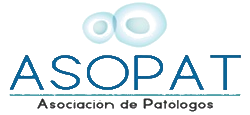The fresh DAVID investment was used for gene-annotation enrichment research of your own transcriptome therefore the translatome DEG directories having categories regarding the following information: PIR ( Gene Ontology ( KEGG ( and you may Biocarta ( pathway databases, PFAM ( and you may COG ( databases. The significance of overrepresentation is determined from the an untrue breakthrough rate of 5% having Benjamini multiple comparison correction. Coordinated annotations were utilized so you’re able to estimate the latest uncoupling away from useful recommendations because proportion regarding annotations overrepresented on translatome however regarding transcriptome readings and you may the http://datingranking.net/de/420-dating-de/ other way around.
High-throughput research on worldwide changes on transcriptome and translatome levels was indeed achieved out-of social research repositories: Gene Phrase Omnibus ( ArrayExpress ( Stanford Microarray Databases ( Minimal criteria i depending having datasets become included in our data were: complete entry to intense investigation, hybridization reproductions for every single fresh status, two-class evaluation (addressed class vs. control classification) both for transcriptome and translatome. Chosen datasets are in depth during the Desk step one and extra file 4. Brutal research was treated pursuing the same processes demonstrated on the prior section to choose DEGs either in the brand new transcriptome or the translatome. Likewise, t-make sure SAM were utilized since the option DEGs possibilities measures implementing a beneficial Benjamini Hochberg several test correction with the ensuing p-thinking.
Pathway and network investigation which have IPA
The IPA software (Ingenuity Systems, was used to assess the involvement of transcriptome and translatome differentially expressed genes in known pathways and networks. IPA uses the Fisher exact test to determine the enrichment of DEGs in canonical pathways. Pathways with a Bonferroni-Hochberg corrected p-value < 0.05 were considered significantly over-represented. IPA also generates gene networks by using experimentally validated direct interactions stored in the Ingenuity Knowledge Base. The networks generated by IPA have a maximum size of 35 genes, and they receive a score indicating the likelihood of the DEGs to be found together in the same network due to chance. IPA networks were generated from transcriptome and translatome DEGs of each dataset. A score of 4, used as a threshold for identifying significant gene networks, indicates that there is only a 1/10000 probability that the presence of DEGs in the same network is due to random chance. Each significant network is associated by IPA to three cellular functions, based on the functional annotation of the genes in the network. For each cellular function, the number of associated transcriptome networks and the number of associated translatome networks across all the datasets was calculated. For each function, a translatome network specificity degree was calculated as the number of associated translatome networks minus the number of associated transcriptome networks, divided by the total number of associated networks. Only cellular functions with more than five associated networks were considered.
Semantic similarity
In order to precisely gauge the semantic transcriptome-to-translatome similarity, i also implemented a measure of semantic similarity that takes with the account the brand new sum out-of semantically similar terminology in addition to the identical of these. I find the graph theoretical strategy because it is based simply on the the fresh structuring rules describing this new relationships between the words on the ontology in order to assess the fresh new semantic worth of for each and every name getting compared. Ergo, this method is free away from gene annotation biases affecting most other similarity steps. Being along with specifically wanting distinguishing between the transcriptome specificity and you will brand new translatome specificity, we independently calculated those two benefits towards the advised semantic resemblance size. Similar to this the semantic translatome specificity is understood to be 1 without averaged maximum similarities anywhere between for each and every identity on translatome checklist which have any term throughout the transcriptome number; also, the fresh semantic transcriptome specificity is described as step one minus the averaged maximum similarities between for every single label about transcriptome checklist and people title throughout the translatome checklist. Given a list of m translatome words and you can a summary of letter transcriptome terminology, semantic translatome specificity and you can semantic transcriptome specificity are therefore recognized as:

Comentarios recientes